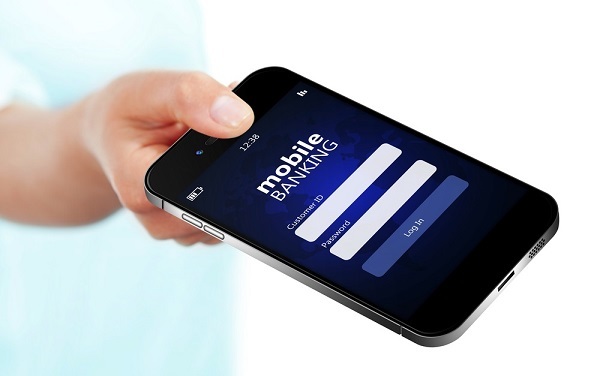Bringing Underbanked Consumers Out of the Shadows
In this guest post, Wyatt Jefferies, Sr. Director of PR for Equifax, explores the underbanked consumer with Joshua Sledge, Director on the Program Team at the Center for Financial Services Innovation, a nonprofit organization headquartered in Chicago. Its mission is to improve the financial health of Americans, especially the underserved, by shaping a robust and innovative financial services marketplace with increased access to higher quality products and practices.
Jefferies: Tell us about your organization and why it exists.
Sledge: The Center for Financial Services Innovation is the nation’s leading authority on financial health. We were founded in 2004 with a specific focus on shining a light on the underbanked population and working with financial services providers to develop new solutions and strategies to better serve them. As we evolved, we came to recognize that a bank account wasn’t a silver bullet for consumers’ financial struggles, leading us to think more broadly about their financial health, which we define as having a day-to-day financial system that functions well and increases the likelihood of long-term resilience and opportunity.
Our foundational 2014 survey found that 57% of American adults fall short of that standard; our mission today is to change that picture for the better by working with a diverse network of financial services innovators including banks, credit unions, fintech companies, nonprofits and others.
Jefferies: The underbanked consumer is not a monolith. What are some of the key characteristics of this consumer?
Sledge: According to the FDIC’s most recent study, more than one in four American households are either unbanked or underbanked, meaning they conduct some or all of their financial transactions outside of the traditional banking system. Reasons for not using banks vary within these groups:
- some don’t believe they have enough money to make a bank account worthwhile
- some find banking services too expensive
- some run into access barriers
- others simply don’t trust banking institutions.
While recognizing the diversity of underbanked consumers is important to serving them, providers should focus on some of the population’s key needs:
- fast access to funds deposited into accounts
- transparent and predictable pricing
- and certainty that transactions will be processed correctly and quickly
Jefferies: According to Bank Rate, only 39% of Americans are able to cover a $1,000 emergency expense. What methods are the underbanked consumers using to help them during these unavoidable crisis issues?
Sledge: Financial emergencies and budget shortfalls can be a significant source of stress and pressure for anyone. But underbanked consumers often have fewer options – such as an affordable credit card – to cope with them. Instead, underbanked consumers often employ a number of coping strategies to manage financial emergencies or budget shortfalls, such as:
- hold savings at home
- maintain mutual lending relationships with friends and family
- juggle bill payments to make ends meet
"There’s a real market opportunity for providers to help underserved consumers build savings and credit to increase their resilience to financial shocks."
Jefferies: In your opinion, what are financial institutions getting right or wrong when targeting this consumer?
Sledge: Generally speaking, many financial institutions still suffer from an inaccurate perception of underserved consumers and a lack of understanding of their needs. While underbanked consumers tend to skew toward having lower incomes, most are middle-class households looking for reliable options from providers they can trust. And, contrary to popular belief, underbanked consumers are generally tech-savvy, using mobile banking at higher rates than the general population.
"In recent years, we’ve seen positive signs among segments of the financial services industry that are moving toward creating more and better options for underserved consumers."
Many national and regional banks have begun offering “checkless checking” account options with low minimums, transparent pricing, and limited or no overdraft options. Some have embraced financial technology to develop platforms that help customers manage their day-to-day finances while offering guidance on how to improve their financial health.
Jefferies: Aside from managing credit responsibly, what will it take for consumers with low credit scores to get to the next level financially? Are there specific steps that you recommend?
Sledge: For consumers who are new to credit or have thin files, establishing credit before it’s needed can go a long way in building resilience and opening up future opportunities. Products such as secured credit cards and traditional credit-builder loans can help increase access to affordable credit and create good habits around credit management. For those with damaged credit, the road back to a healthy score can take longer than it does for those without a score to begin with.
In addition to adding positive credit history to their file and exploring ways to resolve negative items on their report, consumers with low credit scores should look to other strategies to build financial resilience in the short-term – such as building emergency savings – while creating plans to pursue long-term goals that are realistic given their financial situation.
Jefferies: Your organization believes finance can be a force for good in people’s lives. How much work needs to be done before there are no credit invisible people in America?
Sledge: Bringing everyone out of the shadows of the credit system is a massive but worthy goal. New underwriting systems that incorporate alternative data, such as rent and utility payments, will allow lenders to take a broader view of a consumer’s financial history situation and score the previously “unscoreable.”
"Financial institutions can and should create new products that provide an on-ramp to credit for those outside of the system, potentially working with community partners for outreach."
Public policy must evolve to promote credit access while ensuring fair lending and consumer protection. It will take many different stakeholders rowing in the same direction but continued awareness of the challenge, productive collaboration, and consumer-focused innovation can help to move the needle on credit accessibility and overall financial health.
Recommended for you





